Rubbing Alcohol Cleaning Hacks: Unlock the sparkling potential of your home with this unexpected cleaning powerhouse! Have you ever looked at that bottle of rubbing alcohol and thought, “There *must* be more to this than just first aid?” Well, you’re absolutely right! For generations, rubbing alcohol, also known as isopropyl alcohol, has been a staple in medicine cabinets, but its cleaning prowess is often overlooked. From ancient Egyptians using fermented fruit to create cleaning solutions to modern-day innovations, the quest for effective and affordable cleaning methods has always been a priority.
I’m excited to share some incredible DIY cleaning tricks using rubbing alcohol that will not only save you money but also reduce your reliance on harsh chemicals. In today’s world, we’re all looking for ways to simplify our lives and create healthier living spaces. These rubbing alcohol cleaning hacks are perfect for tackling everything from stubborn stains to grimy surfaces, leaving your home fresh and sparkling. Plus, who doesn’t love a good DIY project that delivers amazing results? Get ready to discover the surprising versatility of rubbing alcohol and transform your cleaning routine!
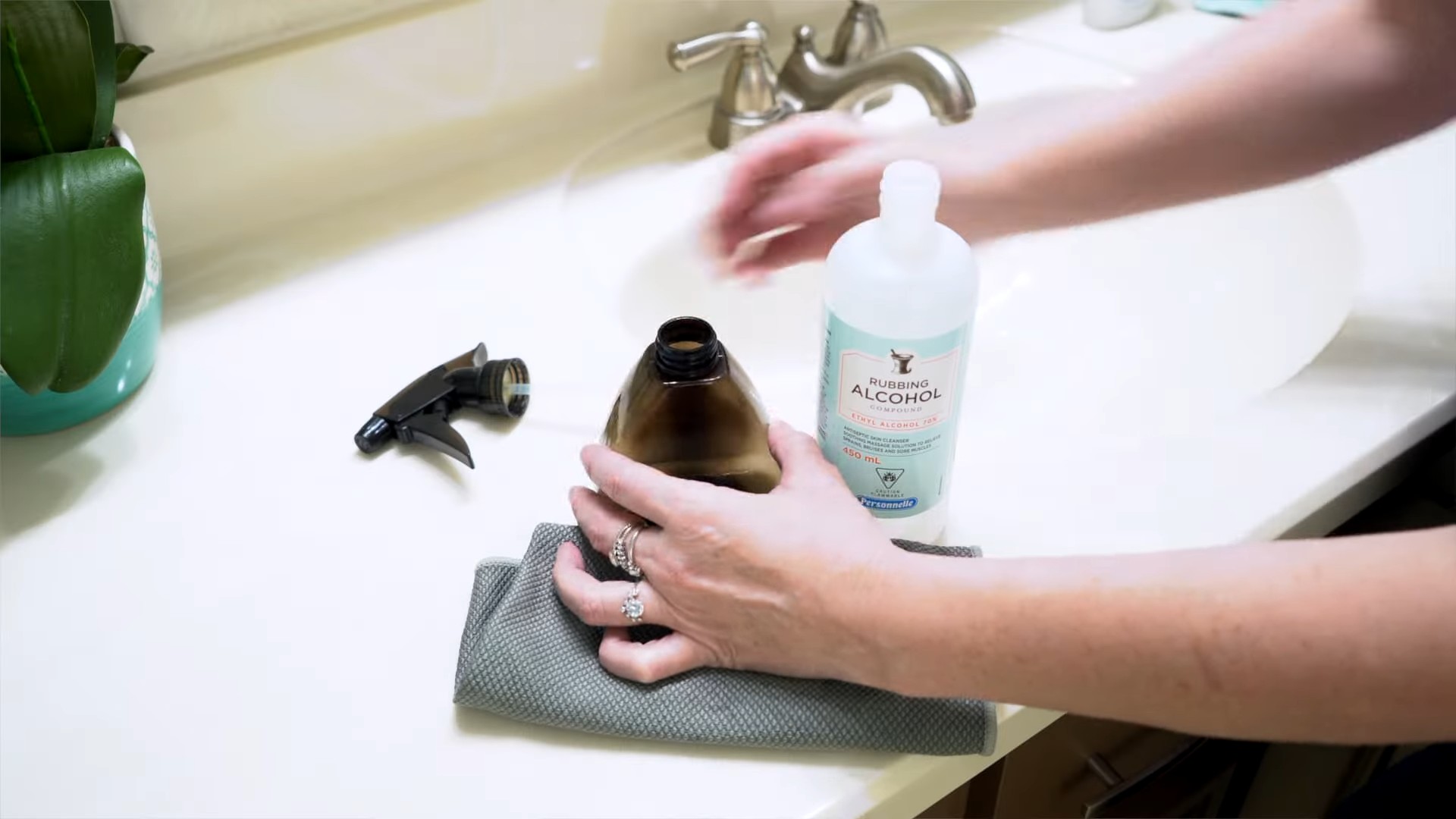
Unlocking the Cleaning Powerhouse: Amazing Rubbing Alcohol Hacks You Need to Know!
Hey there, fellow cleaning enthusiasts! I’m always on the lookout for budget-friendly and effective ways to keep my home sparkling. And guess what? I’ve discovered the magic of rubbing alcohol (isopropyl alcohol) – it’s not just for first aid anymore! This inexpensive liquid is a cleaning superhero, tackling everything from stubborn stains to grimy surfaces. I’m so excited to share my favorite rubbing alcohol cleaning hacks with you. Get ready to be amazed!
Understanding Rubbing Alcohol: Your New Cleaning BFF
Before we dive into the hacks, let’s quickly understand why rubbing alcohol is such a cleaning powerhouse. It’s a fantastic disinfectant, meaning it kills germs and bacteria. It also evaporates quickly, leaving surfaces dry and streak-free. Plus, it’s a solvent, which means it can dissolve grease, grime, and other stubborn messes.
Important Safety Note: Always use rubbing alcohol in a well-ventilated area. Avoid contact with your eyes and skin. Keep it away from heat and flames, as it is flammable. And, of course, keep it out of reach of children and pets.
Hack #1: Sparkling Clean Windows and Mirrors
Tired of streaks on your windows and mirrors? Rubbing alcohol is your answer! This is one of my go-to hacks for achieving a crystal-clear shine.
What you’ll need:
* Spray bottle
* Rubbing alcohol (70% or 91% isopropyl alcohol works great)
* Distilled water
* Microfiber cloth
Step-by-step instructions:
1. Prepare the cleaning solution: In your spray bottle, mix equal parts rubbing alcohol and distilled water. For example, if you’re using a 16-ounce spray bottle, add 8 ounces of rubbing alcohol and 8 ounces of distilled water. The distilled water helps prevent mineral deposits that can cause streaks.
2. Spray the surface: Lightly spray the window or mirror with the rubbing alcohol solution. Don’t over-saturate the surface.
3. Wipe with a microfiber cloth: Immediately wipe the surface with a clean, dry microfiber cloth. Use a circular motion to remove any dirt or grime, then switch to a vertical or horizontal motion for a streak-free finish.
4. Buff (optional): For an extra-sparkly shine, buff the surface with a second clean, dry microfiber cloth.
Hack #2: Disinfecting Your Phone and Electronics
Our phones and other electronics are germ magnets! Think about it – we touch them all day long, transferring bacteria from our hands to the devices. Rubbing alcohol is a safe and effective way to disinfect them.
What you’ll need:
* Rubbing alcohol (70% isopropyl alcohol is recommended for electronics)
* Cotton swabs or microfiber cloth
* Distilled water (optional, for diluting the alcohol)
Step-by-step instructions:
1. Dilute the alcohol (optional): If you’re concerned about the alcohol being too strong for your device, you can dilute it slightly with distilled water. A 50/50 mix is a good starting point.
2. Dampen the cotton swab or cloth: Lightly dampen a cotton swab or microfiber cloth with the rubbing alcohol solution. Make sure it’s not dripping wet, as you don’t want any liquid to get inside your device.
3. Wipe the surface: Gently wipe the surface of your phone, tablet, or other electronic device with the dampened swab or cloth. Pay attention to areas that you touch frequently, such as the screen, buttons, and edges.
4. Allow to air dry: Let the alcohol evaporate completely before using your device. This usually takes just a few seconds.
Important Note: Avoid spraying rubbing alcohol directly onto your electronics. Always apply it to a cloth or swab first. Also, be careful not to get any liquid into ports or openings.
Hack #3: Removing Permanent Marker Stains
Oh no! Did your little one get a hold of a permanent marker and create a masterpiece on your furniture or walls? Don’t panic! Rubbing alcohol can often remove permanent marker stains.
What you’ll need:
* Rubbing alcohol
* Cotton balls or clean cloth
* Clean water
* Clean cloth
Step-by-step instructions:
1. Test in an inconspicuous area: Before applying rubbing alcohol to the stain, test it in a hidden area to make sure it doesn’t damage the surface.
2. Apply rubbing alcohol to the stain: Dampen a cotton ball or clean cloth with rubbing alcohol and gently blot the stain. Avoid rubbing, as this can spread the stain.
3. Repeat as needed: Continue blotting the stain with fresh cotton balls or clean cloths until the stain starts to fade.
4. Rinse with water: Once the stain is gone or significantly reduced, rinse the area with clean
Hey there, fellow cleaning enthusiasts! I’m always on the lookout for budget-friendly and effective ways to keep my home sparkling. And guess what? I’ve discovered the magic of rubbing alcohol (isopropyl alcohol) – it’s not just for first aid anymore! This inexpensive liquid is a cleaning superhero, tackling everything from stubborn stains to grimy surfaces. I’m so excited to share my favorite rubbing alcohol cleaning hacks with you. Get ready to be amazed!
Understanding Rubbing Alcohol: Your New Cleaning BFF
Before we dive into the hacks, let’s quickly understand why rubbing alcohol is such a cleaning powerhouse. It’s a fantastic disinfectant, meaning it kills germs and bacteria. It also evaporates quickly, leaving surfaces dry and streak-free. Plus, it’s a solvent, which means it can dissolve grease, grime, and other stubborn messes.
Important Safety Note: Always use rubbing alcohol in a well-ventilated area. Avoid contact with your eyes and skin. Keep it away from heat and flames, as it is flammable. And, of course, keep it out of reach of children and pets.
Hack #1: Sparkling Clean Windows and Mirrors
Tired of streaks on your windows and mirrors? Rubbing alcohol is your answer! This is one of my go-to hacks for achieving a crystal-clear shine.
What you’ll need:
* Spray bottle
* Rubbing alcohol (70% or 91% isopropyl alcohol works great)
* Distilled water
* Microfiber cloth
Step-by-step instructions:
1. Prepare the cleaning solution: In your spray bottle, mix equal parts rubbing alcohol and distilled water. For example, if you’re using a 16-ounce spray bottle, add 8 ounces of rubbing alcohol and 8 ounces of distilled water. The distilled water helps prevent mineral deposits that can cause streaks.
2. Spray the surface: Lightly spray the window or mirror with the rubbing alcohol solution. Don’t over-saturate the surface.
3. Wipe with a microfiber cloth: Immediately wipe the surface with a clean, dry microfiber cloth. Use a circular motion to remove any dirt or grime, then switch to a vertical or horizontal motion for a streak-free finish.
4. Buff (optional): For an extra-sparkly shine, buff the surface with a second clean, dry microfiber cloth.
Hack #2: Disinfecting Your Phone and Electronics
Our phones and other electronics are germ magnets! Think about it – we touch them all day long, transferring bacteria from our hands to the devices. Rubbing alcohol is a safe and effective way to disinfect them.
What you’ll need:
* Rubbing alcohol (70% isopropyl alcohol is recommended for electronics)
* Cotton swabs or microfiber cloth
* Distilled water (optional, for diluting the alcohol)
Step-by-step instructions:
1. Dilute the alcohol (optional): If you’re concerned about the alcohol being too strong for your device, you can dilute it slightly with distilled water. A 50/50 mix is a good starting point.
2. Dampen the cotton swab or cloth: Lightly dampen a cotton swab or microfiber cloth with the rubbing alcohol solution. Make sure it’s not dripping wet, as you don’t want any liquid to get inside your device.
3. Wipe the surface: Gently wipe the surface of your phone, tablet, or other electronic device with the dampened swab or cloth. Pay attention to areas that you touch frequently, such as the screen, buttons, and edges.
4. Allow to air dry: Let the alcohol evaporate completely before using your device. This usually takes just a few seconds.
Important Note: Avoid spraying rubbing alcohol directly onto your electronics. Always apply it to a cloth or swab first. Also, be careful not to get any liquid into ports or openings.
Hack #3: Removing Permanent Marker Stains
Oh no! Did your little one get a hold of a permanent marker and create a masterpiece on your furniture or walls? Don’t panic! Rubbing alcohol can often remove permanent marker stains.
What you’ll need:
* Rubbing alcohol
* Cotton balls or clean cloth
* Clean water
* Clean cloth
Step-by-step instructions:
1. Test in an inconspicuous area: Before applying rubbing alcohol to the stain, test it in a hidden area to make sure it doesn’t damage the surface.
2. Apply rubbing alcohol to the stain: Dampen a cotton ball or clean cloth with rubbing alcohol and gently blot the stain. Avoid rubbing, as this can spread the stain.
3. Repeat as needed: Continue blotting the stain with fresh cotton balls or clean cloths until the stain starts to fade.
4. Rinse with water: Once the stain is gone or significantly reduced, rinse the area with clean water to remove any remaining alcohol.
5. Dry with a clean cloth: Dry the area with a clean cloth.
Important Note: This hack works best on non-porous surfaces like plastic, metal, and sealed wood. It may not be as effective on porous surfaces like fabric or unsealed wood.
Hack #4: Cleaning and Disinfecting Your Bathroom
Rubbing alcohol is a fantastic all-purpose cleaner for your bathroom. It can disinfect surfaces, remove soap scum, and leave everything sparkling clean.
What you’ll need:
* Spray bottle
* Rubbing alcohol
* Microfiber cloth
* Old toothbrush (optional, for scrubbing grout)
Step-by-step instructions:
1. Prepare the cleaning solution: Pour rubbing alcohol into a spray bottle. You can use it undiluted for maximum disinfecting power.
2. Spray the surfaces: Spray the surfaces you want to clean, such as the toilet seat, sink, countertops, and shower walls.
3. Wipe with a microfiber cloth: Wipe the surfaces with a clean microfiber cloth.
4. Scrub grout (optional): For stubborn soap scum or mildew in your grout, spray the grout with rubbing alcohol and scrub with an old toothbrush.
5. Allow to air dry: Let the alcohol evaporate completely. This will disinfect the surfaces and leave them streak-free.
Hack #5: Removing Sticky Residue
We’ve all been there – trying to peel off a sticker or label and being left with a sticky, gooey residue. Rubbing alcohol to the rescue!
What you’ll need:
* Rubbing alcohol
* Cotton ball or clean cloth
* Plastic scraper or credit card (optional)
Step-by-step instructions:
1. Apply rubbing alcohol to the residue: Dampen a cotton ball or clean cloth with rubbing alcohol and apply it to the sticky residue.
2. Let it sit for a few minutes: Allow the alcohol to sit on the residue for a few minutes to soften it.
3. Wipe or scrape away the residue: Wipe away the residue with the cotton ball or cloth. If the residue is stubborn, you can use a plastic scraper or credit card to gently scrape it off.
4. Repeat as needed: Repeat the process until all the residue is gone.
5. Clean the surface: Clean the surface with soap and water to remove any remaining alcohol.
Hack #6: Freshening Up Smelly Shoes
Smelly shoes? Rubbing alcohol can help! It kills the bacteria that cause odors, leaving your shoes smelling fresh and clean.
What you’ll need:
* Spray bottle
* Rubbing alcohol
Step-by-step instructions:
1. Spray the inside of the shoes: Spray the inside of your shoes with rubbing alcohol. Don’t saturate them, just give them a light mist.
2. Allow to air dry: Let the shoes air dry completely. This may take several hours, depending on the humidity.
Tip: For extra odor control, sprinkle baking soda inside the shoes after they’ve dried.
Hack #7: Cleaning Jewelry
Give your jewelry a sparkling makeover with rubbing alcohol! It’s a gentle and effective way to remove dirt, oil, and grime.
What you’ll need:
* Rubbing alcohol
* Small bowl
* Soft-bristled toothbrush (optional)
* Clean cloth
Step-by-step instructions:
1. Soak the jewelry: Pour rubbing alcohol into a small bowl and soak your jewelry for 10-15 minutes.
2. Scrub gently (optional): If your jewelry is particularly dirty, you can gently scrub it with a soft-bristled toothbrush.
3. Rinse with water: Rinse the jewelry with clean water.
4. Dry with a clean cloth: Dry the jewelry with a clean cloth.
Important Note
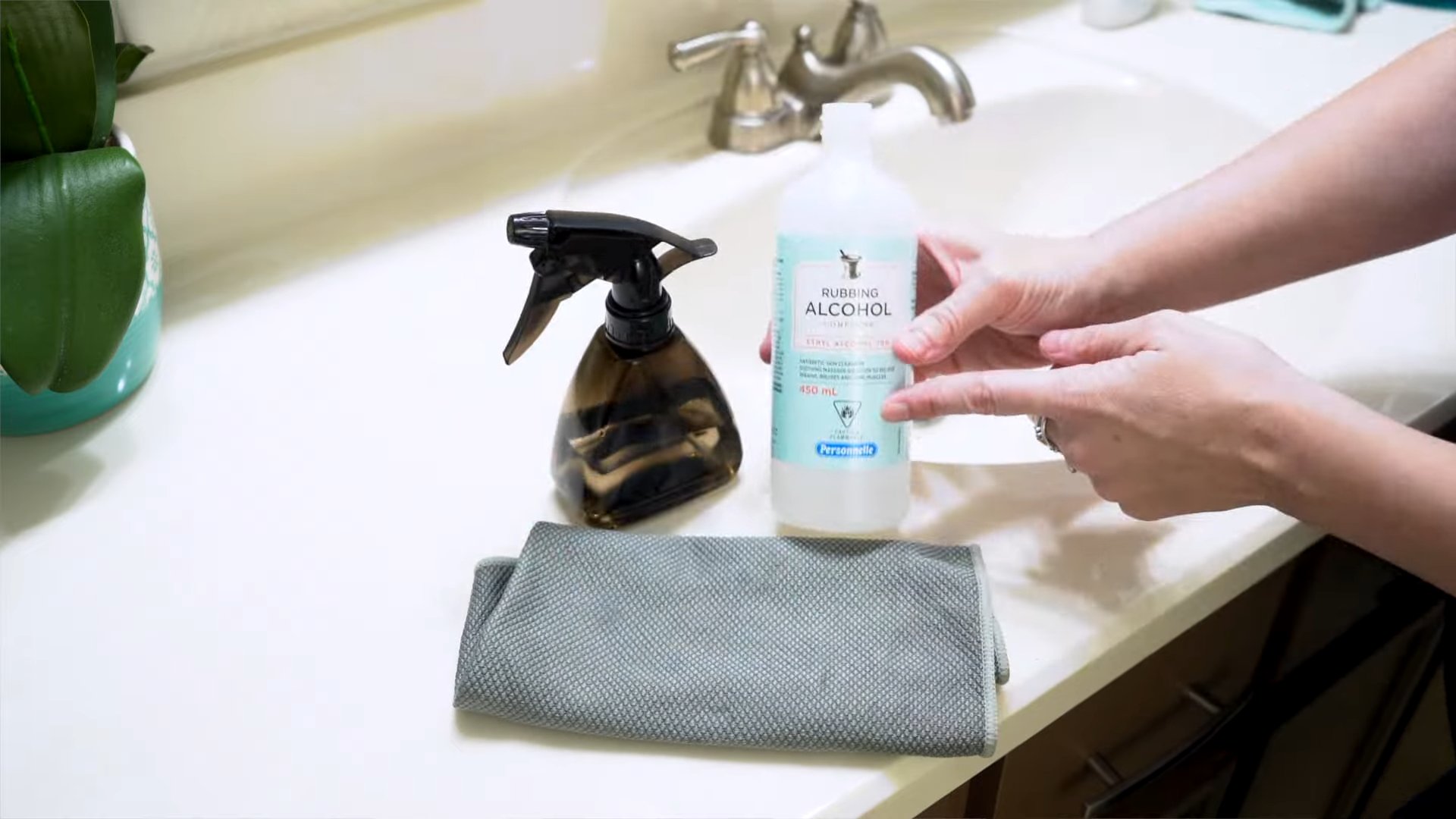
Conclusion
So, there you have it! Rubbing alcohol, that unassuming bottle often relegated to the medicine cabinet, is actually a powerhouse of cleaning potential just waiting to be unleashed. We’ve explored a range of incredible cleaning hacks, from banishing stubborn stains to disinfecting surfaces with ease, all thanks to the simple power of isopropyl alcohol.
Why is this DIY cleaning trick a must-try? Because it’s effective, affordable, and readily available. Forget spending a fortune on specialized cleaning products filled with harsh chemicals. Rubbing alcohol offers a safer, more eco-friendly alternative that gets the job done just as well, if not better, in many cases. Plus, the versatility is unmatched. One bottle can tackle a multitude of cleaning tasks around your home, simplifying your cleaning routine and saving you valuable time and money.
But the benefits don’t stop there. Rubbing alcohol’s quick-drying properties mean no more waiting around for surfaces to dry, reducing the risk of water spots and mildew growth. Its disinfecting power helps to eliminate germs and bacteria, creating a healthier living environment for you and your family. And let’s not forget its ability to dissolve sticky residues and grime, leaving surfaces sparkling clean and refreshed.
Looking for suggestions or variations? Absolutely! For a more fragrant cleaning experience, add a few drops of your favorite essential oil to your rubbing alcohol solution. Lavender, lemon, and eucalyptus are all excellent choices that will leave your home smelling fresh and clean. You can also experiment with different concentrations of rubbing alcohol depending on the task at hand. For heavy-duty cleaning, use a higher concentration, while for more delicate surfaces, dilute it with water.
Consider adding a splash of white vinegar to your rubbing alcohol cleaning solution for an extra boost of cleaning power. This combination works wonders on soap scum, hard water stains, and other tough messes. Just be sure to test it on an inconspicuous area first to ensure it doesn’t damage the surface.
Another variation is to infuse your rubbing alcohol with citrus peels. Simply place citrus peels (lemon, orange, grapefruit) in a jar and cover them with rubbing alcohol. Let it sit for a few weeks, shaking occasionally. The resulting infused alcohol will have a pleasant citrus scent and added cleaning power.
We’ve only scratched the surface of what rubbing alcohol can do. From cleaning electronics to removing permanent marker stains, the possibilities are endless. So, ditch the expensive cleaning products and embrace the power of this simple, yet effective, solution.
We wholeheartedly encourage you to try these rubbing alcohol cleaning hacks and discover the amazing results for yourself. We’re confident that you’ll be impressed by its versatility, effectiveness, and affordability.
Don’t just take our word for it. Experiment with different applications, find what works best for you, and share your experiences with us! We’d love to hear your success stories, tips, and tricks. Let’s create a community of savvy cleaners who are harnessing the power of rubbing alcohol to keep their homes sparkling clean and healthy. Share your photos and stories on social media using #RubbingAlcoholHacks and let’s inspire others to join the movement!
FAQ
What exactly is rubbing alcohol, and what makes it such a good cleaner?
Rubbing alcohol, also known as isopropyl alcohol, is a common household chemical with powerful cleaning and disinfecting properties. Its molecular structure allows it to dissolve a wide range of substances, including grease, grime, and sticky residues. It’s also an effective disinfectant, killing many types of bacteria, viruses, and fungi. The key is its ability to denature proteins and disrupt cell membranes, effectively neutralizing these harmful microorganisms. Its quick-drying nature also prevents the growth of mold and mildew, making it an ideal cleaner for bathrooms and other damp areas.
Is it safe to use rubbing alcohol on all surfaces?
So, there you have it! Rubbing alcohol, that unassuming bottle often relegated to the medicine cabinet, is actually a powerhouse of cleaning potential just waiting to be unleashed. We’ve explored a range of incredible cleaning hacks, from banishing stubborn stains to disinfecting surfaces with ease, all thanks to the simple power of isopropyl alcohol.
Why is this DIY cleaning trick a must-try? Because it’s effective, affordable, and readily available. Forget spending a fortune on specialized cleaning products filled with harsh chemicals. Rubbing alcohol offers a safer, more eco-friendly alternative that gets the job done just as well, if not better, in many cases. Plus, the versatility is unmatched. One bottle can tackle a multitude of cleaning tasks around your home, simplifying your cleaning routine and saving you valuable time and money.
But the benefits don’t stop there. Rubbing alcohol’s quick-drying properties mean no more waiting around for surfaces to dry, reducing the risk of water spots and mildew growth. Its disinfecting power helps to eliminate germs and bacteria, creating a healthier living environment for you and your family. And let’s not forget its ability to dissolve sticky residues and grime, leaving surfaces sparkling clean and refreshed.
Looking for suggestions or variations? Absolutely! For a more fragrant cleaning experience, add a few drops of your favorite essential oil to your rubbing alcohol solution. Lavender, lemon, and eucalyptus are all excellent choices that will leave your home smelling fresh and clean. You can also experiment with different concentrations of rubbing alcohol depending on the task at hand. For heavy-duty cleaning, use a higher concentration, while for more delicate surfaces, dilute it with water.
Consider adding a splash of white vinegar to your rubbing alcohol cleaning solution for an extra boost of cleaning power. This combination works wonders on soap scum, hard water stains, and other tough messes. Just be sure to test it on an inconspicuous area first to ensure it doesn’t damage the surface.
Another variation is to infuse your rubbing alcohol with citrus peels. Simply place citrus peels (lemon, orange, grapefruit) in a jar and cover them with rubbing alcohol. Let it sit for a few weeks, shaking occasionally. The resulting infused alcohol will have a pleasant citrus scent and added cleaning power.
We’ve only scratched the surface of what rubbing alcohol can do. From cleaning electronics to removing permanent marker stains, the possibilities are endless. So, ditch the expensive cleaning products and embrace the power of this simple, yet effective, solution.
We wholeheartedly encourage you to try these rubbing alcohol cleaning hacks and discover the amazing results for yourself. We’re confident that you’ll be impressed by its versatility, effectiveness, and affordability.
Don’t just take our word for it. Experiment with different applications, find what works best for you, and share your experiences with us! We’d love to hear your success stories, tips, and tricks. Let’s create a community of savvy cleaners who are harnessing the power of rubbing alcohol to keep their homes sparkling clean and healthy. Share your photos and stories on social media using #RubbingAlcoholHacks and let’s inspire others to join the movement!
FAQ
What exactly is rubbing alcohol, and what makes it such a good cleaner?
Rubbing alcohol, also known as isopropyl alcohol, is a common household chemical with powerful cleaning and disinfecting properties. Its molecular structure allows it to dissolve a wide range of substances, including grease, grime, and sticky residues. It’s also an effective disinfectant, killing many types of bacteria, viruses, and fungi. The key is its ability to denature proteins and disrupt cell membranes, effectively neutralizing these harmful microorganisms. Its quick-drying nature also prevents the growth of mold and mildew, making it an ideal cleaner for bathrooms and other damp areas.
Is it safe to use rubbing alcohol on all surfaces?
While rubbing alcohol is generally safe for most surfaces, it’s always a good idea to test it on an inconspicuous area first, especially on delicate materials like painted surfaces, wood finishes, and certain plastics. High concentrations of rubbing alcohol can potentially damage or discolor some surfaces. Avoid using it on acrylic or polycarbonate plastics, as it can cause them to crack or become cloudy. When in doubt, dilute the rubbing alcohol with water or consult the manufacturer’s instructions for the surface you’re cleaning.
What concentration of rubbing alcohol is best for cleaning?
The ideal concentration of rubbing alcohol for cleaning depends on the specific task. For general cleaning and disinfecting, a 70% concentration is usually sufficient. This concentration is effective at killing germs and bacteria while also allowing for some water content, which helps to dissolve dirt and grime. For more stubborn stains or heavy-duty cleaning, you can use a higher concentration, such as 91% or even 99%. However, be aware that higher concentrations can dry out surfaces more quickly and may be more likely to damage delicate materials.
Can I mix rubbing alcohol with other cleaning products?
It’s generally not recommended to mix rubbing alcohol with other cleaning products, especially bleach. Mixing rubbing alcohol with bleach can create toxic fumes that are harmful to breathe. It’s also best to avoid mixing it with ammonia, as this can also create dangerous gases. When using rubbing alcohol for cleaning, it’s best to use it on its own or with water. You can also add a few drops of essential oils for fragrance, but avoid mixing it with other chemical cleaners.
How should I store rubbing alcohol safely?
Rubbing alcohol is flammable, so it’s important to store it safely. Keep it in a tightly sealed container in a cool, dry place away from heat, sparks, and open flames. Store it out of reach of children and pets. Avoid storing it near other flammable materials or chemicals. If you spill rubbing alcohol, clean it up immediately with a damp cloth.
Is rubbing alcohol safe to use around children and pets?
While rubbing alcohol is a relatively safe cleaning product, it’s important to take precautions when using it around children and pets. Keep it out of their reach and avoid using it in areas where they are likely to come into contact with it. If you’re using it to clean toys or other items that children may put in their mouths, be sure to rinse them thoroughly with water afterwards. If your child or pet ingests rubbing alcohol, contact a medical professional or veterinarian immediately.
Can rubbing alcohol be used to clean electronics?
Yes, rubbing alcohol can be used to clean electronics, but it’s important to do so carefully. Use a cotton swab or microfiber cloth dampened with rubbing alcohol to gently clean the screen, keyboard, or other surfaces. Avoid getting any liquid inside the device. Be sure to unplug the device before cleaning it and allow it to dry completely before turning it back on. Use a 91% or higher concentration of rubbing alcohol for cleaning electronics, as it will evaporate more quickly and reduce the risk of damage.
What are some common mistakes to avoid when using rubbing alcohol for cleaning?
One common mistake is using too much rubbing alcohol, which can leave a residue or damage surfaces. Another mistake is not testing it on an inconspicuous area first, especially on delicate materials. It’s also important to avoid mixing it with other cleaning products, especially bleach. Finally, be sure to store it safely and keep it out of reach of children and pets. Always wear gloves when using rubbing alcohol for cleaning, especially if you have sensitive skin.

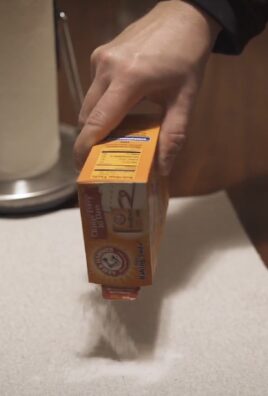
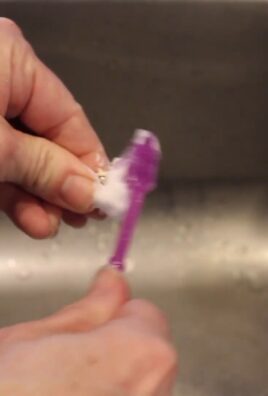
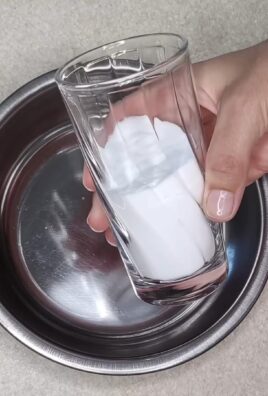
Leave a Comment